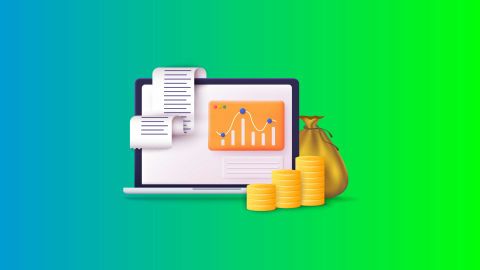Imagine earning money and not even knowing it’s waiting for you. That’s what happens with unclaimed dividends—funds that belong to shareholders but have never been collected. Whether due to outdated contact details, forgotten investments, or sheer oversight, crores of rupees in dividends lie unclaimed across India every year.
But here's the good news—these earnings aren’t lost forever. If you’ve ever owned shares or inherited investments, there’s a real chance some money could be sitting unclaimed under your name.
This guide simplifies what unclaimed dividends are, why they happen, and how you can check if you’re owed anything. We’ll also walk you through the step-by-step process to reclaim your rightful money, no matter how long it’s been.
The first step to avoiding lost investments is building healthy habits, start a mutual fund SIP with a small amount and track your portfolio regularly. Start with just Rs. 100
What is an unclaimed dividend?
An unclaimed dividend is a payout from a company that was declared but never received by the shareholder. This could be due to multiple reasons—maybe the shareholder moved and didn’t update their address, or the dividend went to a closed bank account.
Sometimes, the shareholder might not even know the company declared a dividend. In other cases, family members might be unaware of inherited shares and never claim the payout.
Here are some of the most common reasons dividends go unclaimed:
Change of address not updated with the company
Old or invalid bank account details
Death of the shareholder with no nominee registered
Ignorance or neglect by shareholders about dividend declarations
Unclaimed dividends may seem minor at first—but they accumulate over time and can turn into a substantial amount if not claimed.
Example of unclaimed dividend
Let’s take a simple example. Mr. A is a shareholder in Company X. Over the years, the company declares dividends, but Mr. A doesn’t receive them. Why? His address has changed, and the company’s records still have the old one.
Each time the dividend is sent, it bounces back. Mr. A, unaware of the dividend declarations, never follows up. These amounts, although small individually, pile up year after year.
This is not a rare case. Large, listed companies have crores sitting as unclaimed dividends—mostly due to unreachable or inactive shareholders. Many don’t even know they’re missing out on money that’s legally theirs.
How do you check for unclaimed dividends?
Worried you might have missed a dividend? Here’s how to find out:
Step 1: Visit the website of the company you’ve invested in, or directly go to the IEPF website.
Step 2: On the company’s website, head to the “Investor Relations” or “Shareholder Services” section. On the IEPF site, use your Client ID, Account Number, or Folio Number.
Step 3: Look for a section titled Unclaimed Dividends or Unpaid Amounts. This section will list details of dividends that haven’t been claimed.
Step 4: Enter your PAN, Name, Folio/DP ID, or Account Number. Then click Submit.
Step 5: A list of unclaimed dividends—if any—will appear. If found, you’ll know how much you’re owed and for which company.
If you have missed dividends before, chances are you’re missing better investment options too. Compare mutual funds instantly
Unclaimed dividend treatment
What happens to dividends that remain unclaimed for too long?
By law, if you haven’t claimed your dividend for 7 years, the amount gets transferred to the Investor Education and Protection Fund (IEPF), a government-managed fund under the Ministry of Corporate Affairs.
Let’s revisit Mr. A from our earlier example. If his dividend from 2016 goes unclaimed till 2023, it moves to the IEPF. But the good news is—it’s still retrievable.
Even after seven years, you can still claim your dividend. However, you’ll now need to apply to the IEPF instead of the company directly, and the process involves submitting a formal refund application along with identity proofs and supporting documents.
The law ensures your money stays safe. But to access it, you’ll need to go through the right process—which we’ll break down in the next section.
How to claim unclaimed dividends?
Claiming your unclaimed dividends may take a few steps but it’s absolutely doable. Here’s how you can get your money back from the IEPF:
Step 1: Visit the IEPF Website
Go to the IEPF portal and click on ‘Claim Refund’ under the ‘Services’ tab.
Step 2: Log in to the MCA Portal
Clicking ‘Upload eForms’ redirects you to the MCA website. Log in using your credentials.
Step 3: Fill the IEPF-5 Form
This is the official refund form. You’ll need to provide details like PAN, folio number, demat ID, name, and a cancelled cheque.
Step 4: Attach Required Documents
Include scanned copies of your PAN, identity proof, cancelled cheque, and any other proofs showing your entitlement to the shares/dividends.
Step 5: Submit the Form Online
Once submitted, you’ll receive an SRN (Service Request Number) to track your claim.
Step 6: Send Physical Documents to Nodal Officer
Print and post all your documents to the company’s Nodal Officer. This is mandatory.
Step 7: Company Files Verification Report
The company verifies your documents and sends a digital report to IEPF.
Step 8: Final Approval from IEPF
IEPF checks everything. If it’s all in order, they approve the refund—usually within 60 days.
Step 9: Refund is Issued
The money is credited directly to your bank account.
It might sound long-winded, but once you’re done, you’ll have claimed money you may not even have realised you were missing.
Why are dividends left unclaimed?
There are many reasons why dividends are never received—even when the money is rightfully yours:
Old address: Dividend cheques sent to outdated addresses bounce back.
Closed bank account: If your account is closed and not updated, online credit fails.
Tiny dividend amount: Many investors ignore small payouts, assuming they’re not worth claiming.
Uninformed heirs: If the original shareholder passed away, their family may not know the shares exist.
Outdated contact or KYC details: No updates = no alerts.
The result? Dividends go unpaid, year after year, sometimes without the investor even knowing.
Where do unclaimed dividends go?
If you don’t claim your dividend for seven straight years, it goes to the Investor Education and Protection Fund (IEPF). This rule comes from Section 124 of the Companies Act, 2013.
But don’t worry—this doesn’t mean your money disappears. The IEPF protects your unclaimed dividends and shares, so they can still be claimed by you or your legal heirs in the future.
You’ll need to file Form IEPF-5, attach all relevant proofs, and go through the official approval process. While it may take a few weeks, the system ensures that the rightful owner can reclaim what belongs to them.
Conclusion
It is surprisingly easy to lose track of money that’s legally yours especially when it comes in the form of unclaimed dividends. But the good news is, it is not too late. Whether it’s an old investment, inherited shares, or dividends you missed due to an address or account change, you can still recover what’s yours.
By checking your records regularly, updating your KYC details, and being aware of where your investments lie, you can make sure that your earnings don’t go unclaimed or unnoticed. And if they already have? The IEPF process is there to help you reclaim them.
Do not leave your money behind. A few simple steps could bring back lost earnings and even serve as a reminder to track your finances better going forward.
Recovering missed earnings is a reminder that consistent monitoring matters—build that habit by starting a simple SIP today. Start your MF journey
If you want to ensure transparency and efficiency in your investment journey, you can invest in mutual funds through the Bajaj Finserv Mutual Fund Platform. You can browse over 1,000 mutual fund schemes and compare mutual funds to find the ones that align with your risk tolerance. You can then make a lumpsum investment or SIP investment to realise your financial goals.




